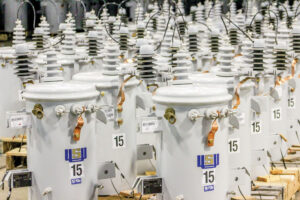A new study shows that electric cooperatives enter the broadband business to help grow their rural communities and that their efforts are paying off.
At least 80 percent of the electric co-ops that participated in the study are seeing an increase in population, businesses or jobs in the communities where they delivered high-speed internet access, according to the 2022 Rural Electric Cooperative Broadband Benchmarking Report.
Electric co-ops listed community service and economic development as their main motivations for deploying broadband, the report says. Following closely behind was the co-ops’ desire to strengthen their electric business with smart grid technologies and to expand and diversify their revenue base.
Eighty-eight of the more than 200 electric co-ops involved in broadband volunteered data for the report, which was produced by NRECA and the National Rural Telecommunications Cooperative (NRTC).
“Our members are deploying broadband to strengthen their local economies and move to a smarter grid,” the report states. “Members are creating smarter grids and smarter communities with an evolving set of technologies.”
Other signs of success from co-op broadband deployment: 77 percent received favorable responses in co-op member surveys about pursuing broadband; 75 percent gained higher-than-expected take-rates for service; and many experienced positive rates of return on their investments.
“Given the ability to access capital at favorable rates through cooperative lenders [such as CFC and CoBank], this generally indicates positive economics of the broadband business,” the report notes.
Most co-ops in broadband are building fiber-optic networks to deliver internet access at the highest speeds for consumer-members, bolster their substation connectivity and integrate smart grid devices, the report finds. This latest report is an update to a similar broadband study done by NRTC in 2020.









